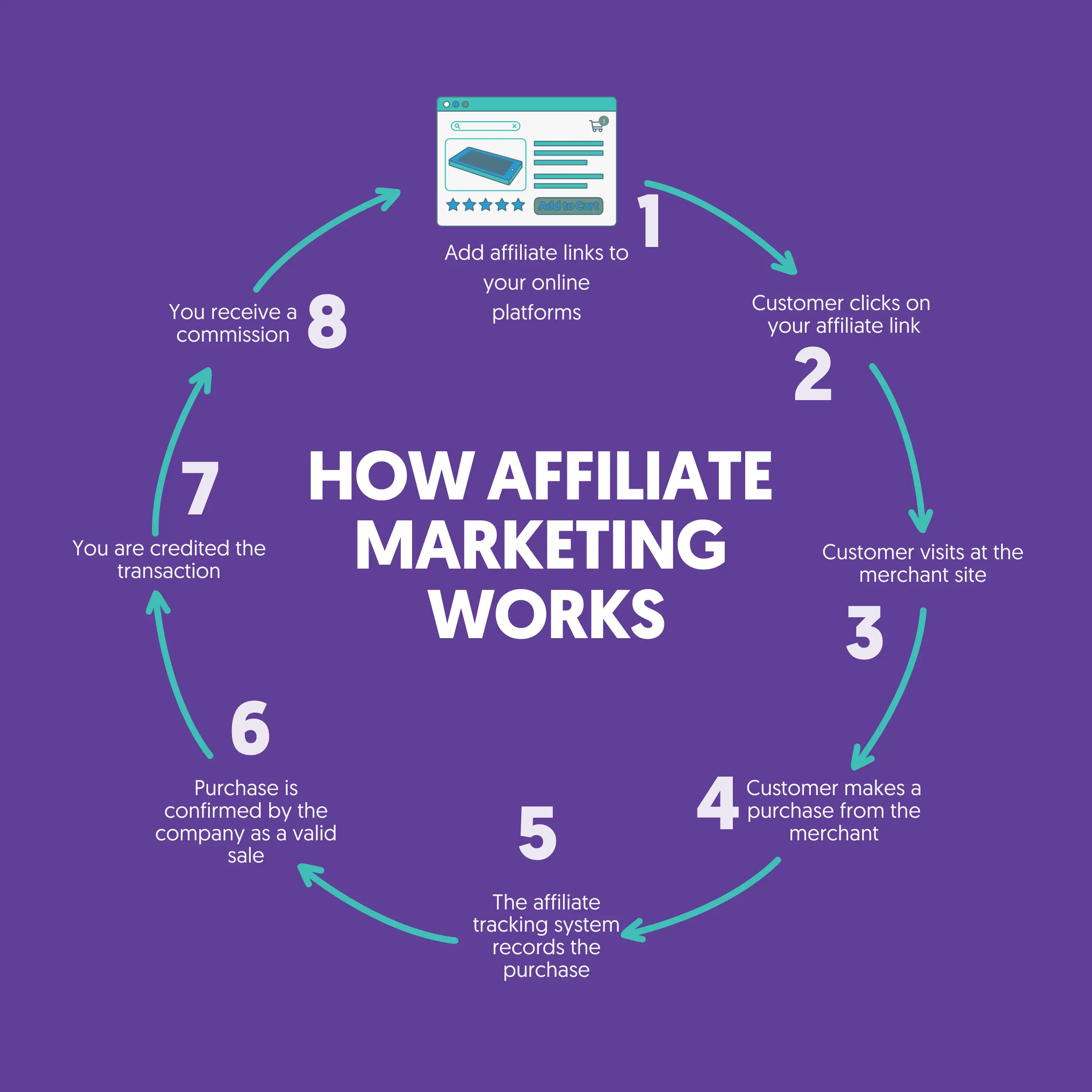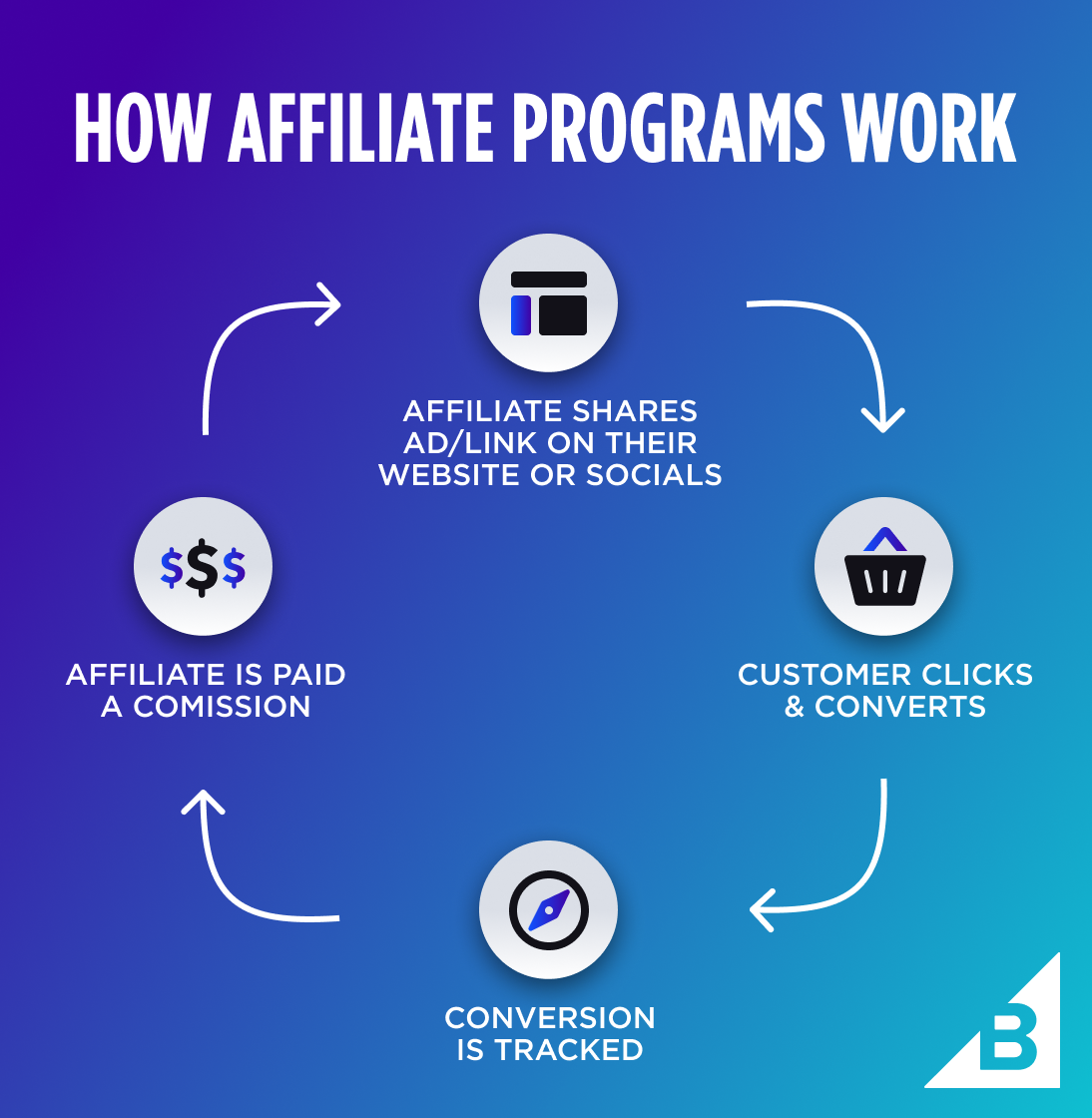Imagine earning money while you sleep, with just a simple click. Sounds intriguing, right?
Affiliate links offer you that opportunity. These digital connectors are more than just hyperlinks; they’re pathways to passive income. By understanding how they work, you can leverage them safely and effectively to boost your earnings. Have you ever wondered what exactly an affiliate link is and how it tracks clicks, actions, and commissions?
This guide will break it down for you, making complex concepts easy to grasp. You’ll discover various types of affiliate links, including raw, cloaked, deep, and shortened, and learn why link cloaking can be crucial—though not always advisable. We’ll also guide you on how to seamlessly integrate affiliate links into your blog, emails, or social media while maintaining transparency and legality through proper disclosures. Avoid common pitfalls that beginners often stumble into, and explore tools that can help you manage and monitor your links like a pro. By the end of this article, you’ll not only understand affiliate links but also feel empowered to use them strategically. So, if you’re ready to master the link and, in turn, master the commission, keep reading. Your journey to affiliate marketing success starts here.

Credit: www.reliablesoft.net
Introduction: The Link That Makes You Money
Affiliate links are a tool that helps people earn money online. They connect you to products or services you can promote. Clicking these links takes users to a seller’s website. If someone buys something, you earn a commission. Setting up affiliate links is easy.
You sign up for an affiliate program, get your unique link, and start sharing it. Using these links safely is important. Make sure the links lead to trusted sites. Keep your audience informed about what the link is for. This builds trust and keeps your relationship with them strong.
Some people worry about privacy when using affiliate links. Checking the site’s privacy policy can help ease these concerns. Also, avoid sharing too many links at once. This can overwhelm your audience. Balancing the number of links and useful content is key.
Affiliate links are powerful, but using them wisely keeps your audience happy.
What Is An Affiliate Link? A Beginner-friendly Breakdown
Affiliate links are a tool used in online marketing. They help companies sell products by partnering with others. These partners, known as affiliates, share links to products on their websites or social media. Each link is unique and tracks the traffic or sales it generates.
This tracking is done with cookies, small data pieces stored in a user’s browser. When someone clicks an affiliate link and makes a purchase, the affiliate earns a commission. This system benefits both parties. Companies increase sales, while affiliates earn money.
It’s important to use affiliate links safely. Always disclose the affiliate relationship to your audience. This builds trust and follows legal guidelines. Choose reputable companies to partner with. Check the terms and conditions of affiliate programs. Understanding how these links work helps you use them wisely.
How Affiliate Links Track Clicks Actions And Commissions
Affiliate links use unique codes to track clicks and actions. Whenever someone clicks on an affiliate link, a small piece of data called a cookie is stored on their device. This cookie helps track what they do next. If they make a purchase, the cookie tells the affiliate program about it.
This way, the affiliate marketer earns a commission. The cookie has a time limit, known as a cookie duration. If a purchase happens within this time, the affiliate gets credit. Different programs have different cookie durations. Some last 24 hours, while others last longer.
Accurate tracking ensures fair commissions for marketers. So, choosing trusted affiliate programs is important. They ensure fair tracking and payments.
Types Of Affiliate Links: Raw Cloaked Deep And Shortened
Affiliate links come in various forms, each serving a unique purpose. Raw links are straightforward URLs that direct users to a specific product or page. They are easy to spot and often used when transparency is key. Cloaked links, on the other hand, disguise the original URL.
This method is helpful for branding and can protect the affiliate from commission theft. Deep links are more targeted, leading users to a particular page or product within a website, rather than the homepage. These links improve user experience by taking them directly to what they are interested in.
Shortened links make URLs more manageable and can be useful for sharing on platforms with character limits. While they don’t reveal the destination, they keep links tidy. Each type has its place and knowing when to use them can enhance marketing efforts while maintaining user trust.
Why Link Cloaking Matters (and When Not To Use It)
Link cloaking is a technique often used to make affiliate links look cleaner and more user-friendly. By doing this, the original URL is hidden behind a shorter, more attractive link. This can help prevent link theft and make links look more professional.
It also protects affiliate commissions from being hijacked by malicious entities. Despite these benefits, it is crucial to know when not to use link cloaking. Search engines might penalize sites that excessively cloak links, especially if it seems like an attempt to deceive users or manipulate rankings.
Transparency is key. Users appreciate knowing where a link will take them before clicking. Additionally, some affiliate programs may have specific rules against link cloaking. Always check the terms of service to ensure compliance. Balancing aesthetics with honesty is important, ensuring users trust your site and the links you share.
How To Safely Add Affiliate Links To Your Blog Email Or Social
Adding affiliate links to your blog, email, or social media can be a great way to earn extra income. Start by choosing products or services that fit well with your content. Always make sure to disclose that you are using affiliate links.
This builds trust with your audience. To add links safely, use short links that look clean and are easy to remember. Many tools can help you create these links. Be careful not to add too many links in one place.
Too many links can overwhelm your readers. It’s important to follow the rules of each platform. Some may have guidelines about where and how you can share affiliate links. Keep your content helpful and relevant to your readers. This will encourage them to click on your links and make a purchase.
Remember, the goal is to provide value while also benefiting from your affiliate partnerships.
Affiliate Disclosures: Staying Transparent And Legal
Transparency is key when using affiliate links. It’s important to let your audience know about the affiliate links you use. This means being open about earning a commission if they click and buy through your link. Such disclosures build trust with your readers.
They feel confident knowing you are honest about your earnings. Legal guidelines also require these disclosures. Many countries have rules about telling people when you might earn money from a link. Following these rules keeps you safe from penalties. Clear disclosure can be as simple as a short statement on your website.
Place it where people will see it easily. By being upfront, you respect your audience and follow the law.
Common Mistakes Beginners Make With Affiliate Links
Affiliate marketing offers a great way to earn money online, but beginners often make some common mistakes. One frequent error is not disclosing affiliate links, which can lead to trust issues with the audience. It is important to clearly state that a link is an affiliate link.
Another mistake is using too many affiliate links on a single page. This can make content look spammy and overwhelm readers. Balancing content with relevant links is key. Focusing on the wrong products can also be a problem. Choosing products that don’t match the audience’s needs or interests can reduce credibility.
Not tracking link performance is another oversight. Understanding which links perform well helps in refining strategies. Lastly, neglecting to read and understand the affiliate program’s terms can lead to violations and loss of commissions. Avoid these pitfalls to use affiliate links effectively and build a trustworthy online presence.
Tools To Manage And Monitor Your Links Like A Pro
Managing and monitoring affiliate links effectively requires the right tools. Link management tools help organize, shorten, and track links easily. These tools allow users to keep track of which links perform best. This means knowing which links get more clicks or lead to more sales.
Tracking tools also show where your audience comes from. This helps in understanding which platforms bring in more traffic. Some popular tools offer features like link cloaking. This makes long affiliate links look clean and professional. Many tools provide detailed reports.
These reports help users make informed decisions on which strategies work best. Using these tools can save time and improve efficiency. They are essential for anyone serious about affiliate marketing. By keeping an eye on your links, you ensure they are safe and effective.
This way, you can focus on creating content while your tools do the heavy lifting.
Final Thoughts: Master The Link Master The Commission
Navigating the world of affiliate links can be a rewarding experience. It’s important to understand how these links work to earn commissions effectively. By choosing the right affiliate programs, you can promote products that align with your interests or expertise.
This makes your recommendations more genuine. Building trust with your audience is key. Always disclose affiliate relationships to maintain transparency. Focus on providing value to your readers through informative and engaging content. This approach encourages them to click on your links.
Consistency in sharing quality content helps in growing your audience over time. Keep track of your affiliate links’ performance to see what resonates with your audience. This data can guide your future strategies. By understanding these basics, you can make affiliate marketing a successful venture.

Credit: www.bigcommerce.com
Frequently Asked Questions
What Are Affiliate Links And How Do They Work?
Affiliate links are unique URLs provided to affiliates. They earn commissions by promoting products or services. Users click these links and make purchases, tracking sales back to the affiliate. This marketing strategy benefits businesses and affiliates by driving traffic and sales.
Can You Make $10,000 A Month With Affiliate Marketing?
Yes, earning $10,000 a month with affiliate marketing is possible. Success depends on niche selection, quality content, and effective marketing strategies. Building a strong audience and leveraging multiple platforms increases income potential. Consistent effort and learning are crucial for achieving high earnings in affiliate marketing.
Do People Actually Make Money With Affiliate Links?
Yes, people can earn money with affiliate links. Success depends on effective marketing and audience engagement. High-quality content and niche selection boost earnings. Many individuals and businesses profit by promoting products through affiliate programs. Regularly update strategies to maximize revenue potential from affiliate links.
Can You Make $100 A Day With Affiliate Marketing?
Earning $100 a day with affiliate marketing is possible. Focus on choosing high-converting products, optimizing content, and driving targeted traffic. Utilize SEO strategies and build a loyal audience. Success varies based on effort, niche, and experience. Consistent effort and learning can enhance your chances of achieving this goal.
Conclusion
Understanding affiliate links helps you earn money online safely. Use them wisely. Track actions and commissions effectively. Choose the right type for your needs. Cloak links for security, but not always. Add links safely to your blog or email. Stay transparent with proper disclosures.
Avoid common mistakes to optimize earnings. Use tools to monitor and manage links efficiently. Mastering these steps boosts your commission potential. Keep learning, stay informed, and grow your affiliate success steadily.

